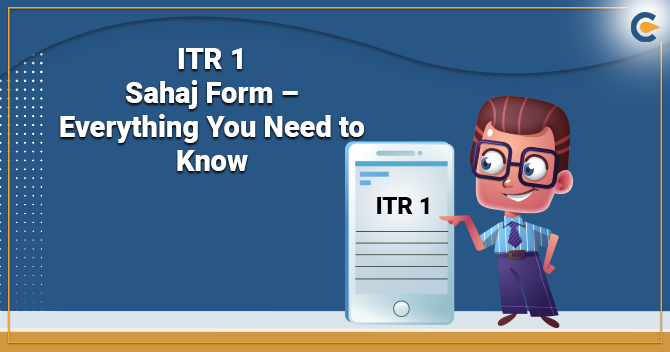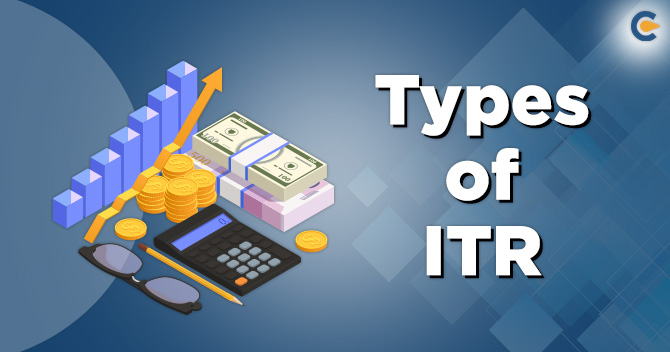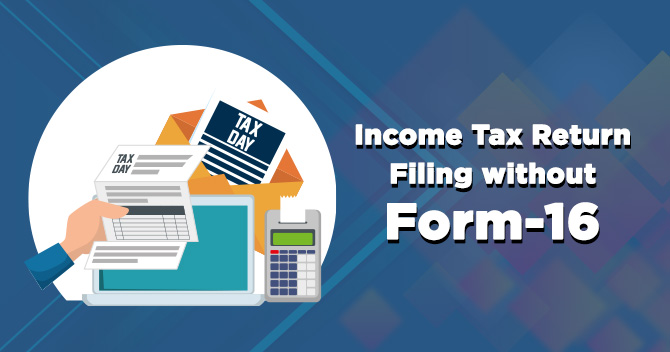To ease tax compliances, the IT department has classified taxpayers into several groups on income & its source. Thus, you are required to file the return accordingly. ITR 1 ,widely recognized as Sahaj form, is for taxpayers with an income of up to fifty lakhs rupees.
Latest Update in light of Union Budget 2021
Indian Government has proposed to exempt senior taxpayers from filing IT returns if interest income and pension are their only sources of income. Section 194P was inculcated in Union Budget 2021 to render conditional relaxation to the senior taxpayers above the age of 75 years from filing an IT return. Section 139 of the IT Act regulates the filing the IT returns by every taxpayer with income more than the actual exemption threshold.
Who can File ITR 1 for AY 2021-22?
ITR -1 Form is a simple e-form for taxpayers earning income up to fifty lakhs rupees from the given sources:
- Income generated from salary/pension
- Income generated from One House Property (excluding cases where loss is carried forward from preceding years)
- Income generated from sources other than Lottery and Income from Race Horses
In the case of clubbed IT returns, where a minor or a spouse is included, this can be done if their income is confined to the specifications above.
Who are not eligible to file ITR-1 for AY 2020-21?
Following taxpayers are not eligible to file ITR-1 for AY 2020-21
- A taxpayer earning annual income more than fifty lakh rupees.
- A taxpayer appointed as a director in an organization & has any unlisted equity shares at his disposal at any time during the financial year.
- Residents not ordinarily resident (aka RNOR) & non-residents
- Also, taxpayers who have generated income via the given sources cannot file ITR 1 form
- House Property (one than one)
- Lottery, Legal Gambling, Racehorses etc.
- Taxable capital gains (Short & Long term)
- Agricultural income surpassing INR. 5,000
- Business & Profession
- Individual who is an Indian national and possess assets (inclusive of financial interest in any company) abroad or signing authority in any account located abroad
- A taxpayer claiming relief of overseas Tax paid or double taxation relief u/s 90/90A/91.
Read our article:Types of ITR (Income Tax Returns)
An overview of the structure of ITR 1 Form
ITR 1 form is divided into five important parts, as mentioned below
Part A
Part A seeks general information from the taxpayer such as;
Name, DOB, Aadhaar No, Mobile Number, Address, Nature of employment, and general declaration regarding earning
Part B
Part B seeks information regarding the Gross total Income. Here what taxpayer needs to fill in this part?
- Gross Salary
- Net Salary
- Gross rent received
- Tax paid to local authorities
- Interest payable on borrowed capital
- Income chargeable under the head “house property.”
- Income earned from other sources
Part C
In Part C taxpayer needs to provide detail regarding Deductions and total taxable income
Here the limit of deduction will be in accordance with IT Act
- 80C, 80CCC, 80CCD(1), 80CCD(1B), 80CCD(2), 80DD, 80DDB, 80E, 80EE, 80EEA, 80EEB, 80GG, 80GGC, 80U
- Total sum of deduction
- Total income (B4 – C1)
Part D – Estimation of Tax payable
This tab entails the computation of Taxtax payable.
- D1 Taxtax payable on aggregate income
- D2 Rebate u/s 87A
- D3 Taxtax after rebate
- D4 Cess on D3
- D5 Total Tax & cess
- D6 Relief u/s 89(1)
- D7 Interest u/s 234A
- D8 Interest u/s 234B
- D9 Interest u/s 234C
- D10 Fee u/s 234F
- D11 Total Tax, fee, & interest
- D12 Total Tax paid
- D13 Amount payable
- D14 Refund
- Exempt income
Part E – Other details (information regarding Bank account)
This tab includes banking details
- Bank’s IFSC Code
- Bank name
- Account Number
Schedule IT (Details of self-assessment tax & advance tax payment)
- BSR code
- Deposit’s date
- Challan’s Serial number
- Tax Paid
Schedule-TDS (TDS/TCS details)
- Tax Deduction Account Number of deductor/ PAN of tenant
- Deductor’s name
- Total payment
- Year of tax deduction
- TDS/TCS credit
- Tax deducted
Verification
Here the taxpayer has to validate and self-authorized the Form at the last by enclosing the signature after furnishing the details such as name, parent name & PAN detail.
Procedure to file ITR-1 Form
A taxpayer can file their ITR-1 Form via offline or online mode.
Filing via Offline Mode
Only the given taxpayers are eligible to file their ITR via offline mode.
- A taxpayer serving the age of 80 years or more at any time during the preceding year
- A taxpayer or HUF[1] whose income is below or equivalent to Rs 5 lakhs & who has not made any claim for refund in the return of income.
In offline mode, the taxpayer is required to file their return in a physical paper form. The IT department will grant an acknowledgement receipt to the taxpayer after receiving a physical paper return.
Filing via Online/Electronically
- By uploading the detail via web-based medium and then furnishing the verification of the return in ITR-V to CPC, Bengaluru.
- By filing the online return & electronically verifying the ITR-V via aadhaar OTP/ net banking/ EVC.
If you furnish the ITR-1 Form digitally, the acknowledgement receipt will be routed to your authorized email address. You can also opt to download the same manually from the IT department portal. You are then required to enclose your signature and send it back to the IT department CPC office in Bangalore within 120 days of filing. On the contrary, you can e-verify your return.
Prominent Amendments made to the ITR 1 for the AY 2021-22
Following are the amendments that have been made to the ITR form:
- The taxpayer is not eligible to file ITR-1 if TDS is deducted u/s 194N. Given the Section 194N, tax shall be levied at source if the non-filers of the ITR withdraw cash surpassing the sum of Rs 20 lakhs. In other cases, Taxtax shall be imposed when the cash withdraws surpass Rs 1 crore threshold in a financial year.
- No option is available to the taxpayer to enable them to carry forward TDS u/s 194N. The credit relating to TDS u/s 194N shall be permitted only during the TDS deduction year.
- The taxpayers or HUFs are allowed to opt for old or new tax framework. If the taxpayers opt for the new tax framework u/s 115BAC, he/she needs to file Form 10IE prior to filing income tax return u/s 139(1).
- The ITR forms for the AY 2020-21 were amended by inculcating the new schedule DI. It permitted individuals to avail of the deduction made during the extended timeframe for the Assessment year 2020-21. The tax authority has got rid of schedule DI from AY 2021-22.
Prominent Amendments made to the ITR 1 for the AY 2020-21
- A taxpayer who fit in the criteria of (a) making cash deposits more than Rs 1 crore with a bank or (b) incurring expense more than Rs 2 lakh on overseas travel or (c) expenses more than Rs 1 lakh on electricity must file ITR-1. The taxpayer should disclose the sum of deposit or expenses.
- The condition of the taxpayer earning income via salaries, one house property, or other sources and having aggregate income up to 50 lakhs continues.
- Resident taxpayers who have a single property under his/her possession in joint ownership are also allowed to file ITR-1 where the aggregate income is up to Rs 50 lakh.
- Taxpayers must independently reveal their investment or deposit or payments towards tax-saving made from 01-04-2020 until 30-06-2020.
Mandatory documents for filing ITR-1 form
- Form 16: Form 16 is primarily a certificate granted by employers to their employees for the given Financial Year.
- Form 26AS: Form 26 AS, best known as the annual consolidated statement, is a vital document that entails all tax-based details of the taxpayer such as TDS, advance tax, etc.
- Receipts: Receipts relating to the HRA allowance or Section 80C or 80D deductions
- PAN card
- Bank investment certificates: Detail of Interest coming from a bank account– bank passbook or FD certificate
Conclusion
ITR 1 form needs to be filed by taxpayers having total income up to Rs 50 lakhs. Those who are earning above this limit can stay away from this form. Filing return via ITR 1 form is rather an easy undertaking considering the information needs to be filled by the taxpayers.
Read our article:Applicability of ITC on Capital Goods under GST











